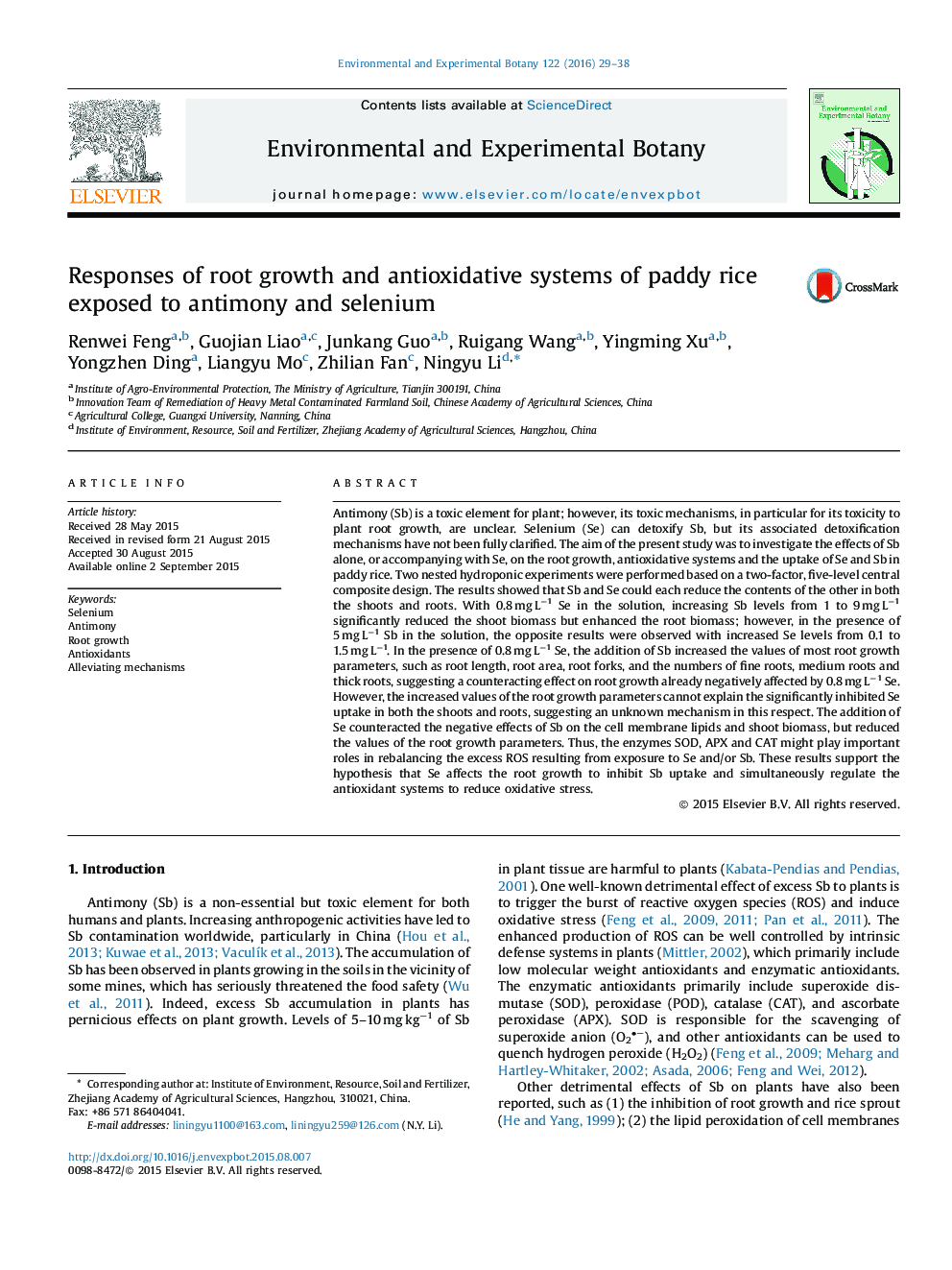| Article ID | Journal | Published Year | Pages | File Type |
|---|---|---|---|---|
| 4554160 | Environmental and Experimental Botany | 2016 | 10 Pages |
•Se and Sb mutually showed antagonistic effects on their uptake.•Sb and Se showed opposite effects on shoot and root biomass upon exposing to Se.•Se could reduce most root parameters to affect the uptake of Sb.•Sb supply increased the values of most root growth parameters exposing to Se.•SOD, APX and CAT were activated by Se and/or Sb to quench excess ROS.
Antimony (Sb) is a toxic element for plant; however, its toxic mechanisms, in particular for its toxicity to plant root growth, are unclear. Selenium (Se) can detoxify Sb, but its associated detoxification mechanisms have not been fully clarified. The aim of the present study was to investigate the effects of Sb alone, or accompanying with Se, on the root growth, antioxidative systems and the uptake of Se and Sb in paddy rice. Two nested hydroponic experiments were performed based on a two-factor, five-level central composite design. The results showed that Sb and Se could each reduce the contents of the other in both the shoots and roots. With 0.8 mg L−1 Se in the solution, increasing Sb levels from 1 to 9 mg L−1 significantly reduced the shoot biomass but enhanced the root biomass; however, in the presence of 5 mg L−1 Sb in the solution, the opposite results were observed with increased Se levels from 0.1 to 1.5 mg L−1. In the presence of 0.8 mg L−1 Se, the addition of Sb increased the values of most root growth parameters, such as root length, root area, root forks, and the numbers of fine roots, medium roots and thick roots, suggesting a counteracting effect on root growth already negatively affected by 0.8 mg L−1 Se. However, the increased values of the root growth parameters cannot explain the significantly inhibited Se uptake in both the shoots and roots, suggesting an unknown mechanism in this respect. The addition of Se counteracted the negative effects of Sb on the cell membrane lipids and shoot biomass, but reduced the values of the root growth parameters. Thus, the enzymes SOD, APX and CAT might play important roles in rebalancing the excess ROS resulting from exposure to Se and/or Sb. These results support the hypothesis that Se affects the root growth to inhibit Sb uptake and simultaneously regulate the antioxidant systems to reduce oxidative stress.
